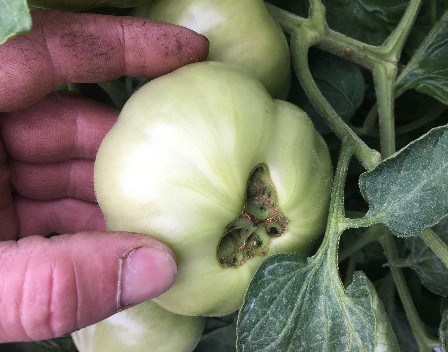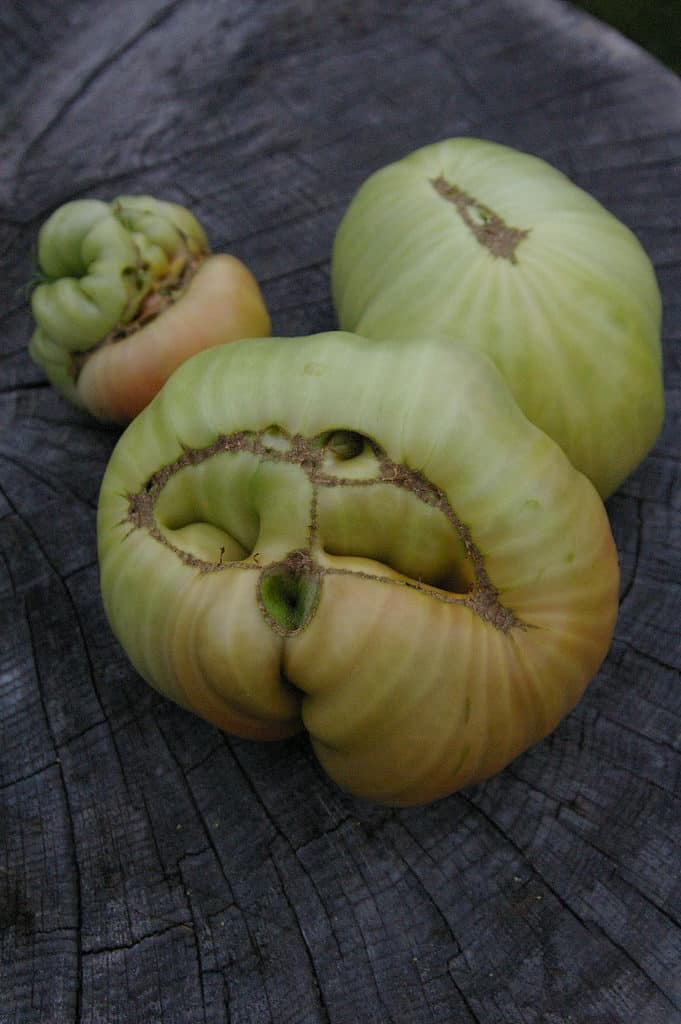No matter how hard you’ve been trying to grow plump and healthy tomatoes, they appear to be funny, strange looking and even deformed. The problem you’re dealing with is called catfacing and it’s a common problem with tomatoes. Learn how to deal with the catfacing disorder, cause it’s never too early to be thinking about your tomatoes.

Why Are My Tomatoes Deformed And Funny Looking?
Catfacing is a term used to describe a deformity in fruits like tomatoes. A tomato affected by this physiological disorder has scarred indentations, holes and cavities, usually on the blossom end of the fruit. These fruits are safe to eat, but, unfortunately, they are not marketable.
The causes of catfacing are not definitely known and there’s little information on the exact cause of this disorder, but it’s generally agreed that there are several possible causes of catfacing in tomatoes.
The most common cause of catfacing is a growth disturbance during the blossom stage. Any abnormality in early flower bud development can cause scarring of fruit and those abnormalities are mainly caused by environmental factors and unfavorable growing conditions.

The extended periods of cold temperatures especially at night are the main culprit for abnormalities in fruit development. Tomato flowers can not develop properly if temperatures drop below 50°F, even if daytime temperatures are high and stable.
It also appears to be that severe pruning in indeterminate varieties may increase catfacing disorder because of reductions in auxins in the plant – a plant hormone that causes the elongation of cells in shoots and is involved in regulating plant growth.
Other possible causes of catfacing are excess nitrogen, insect damage and accidental exposure to hormonal herbicides.
Can anything be done to stop catfacing and deformities on my tomatoes?
In this case, prevention works better than cure. If catfacing disorder occurs, there’s little that can be done. So, before you decide growing tomatoes, you should pick a variety suitable for the growing conditions you can provide them with.
First of all, you can choose a cultivar less susceptible and prone to catfacing. Large and round tomatoes so as jointless varieties are more sensitive to lower temperatures and less prone to catfacing than small and jointed varieties. Also, older cultivars appear to be more resistant and less prone to physical disorders like catfacing.
Some more hardy varieties are ‘Homestead‘ and ‘Monte Carlo’.
If you live in regions where night temperature often drops below 50° the only way you can grow your tomatoes are in a greenhouse. Nevertheless, always consider a proper temperature control and make sure that the temperature in the greenhouse is constantly high, especially during the flower development phase.
But if you want to grow a variety that is susceptible to catfacing you should either protect it during frost or consider planting them when all danger of frost has passed.